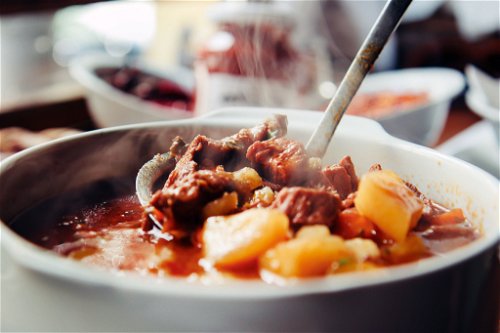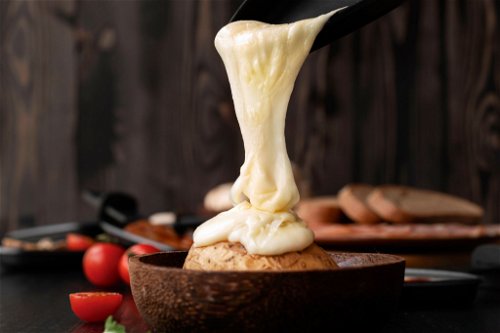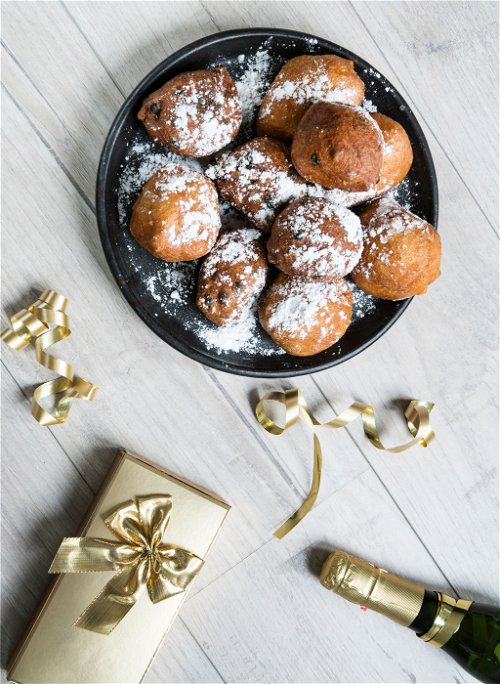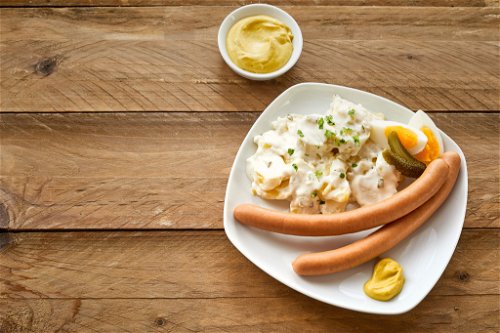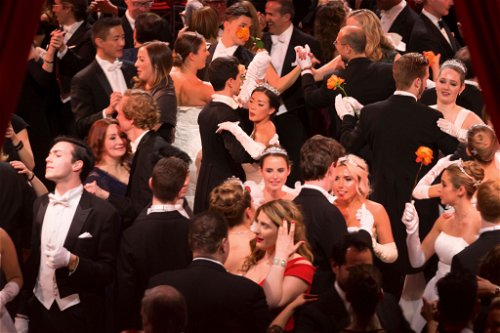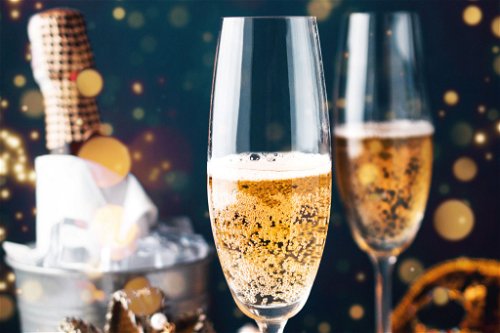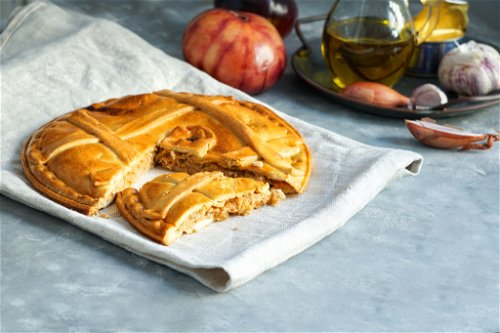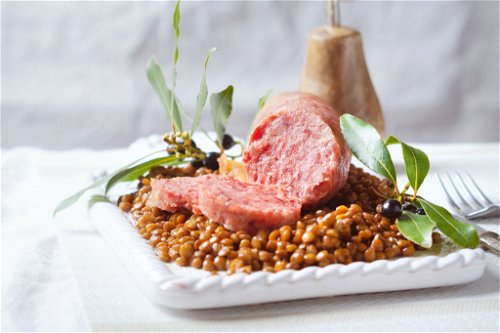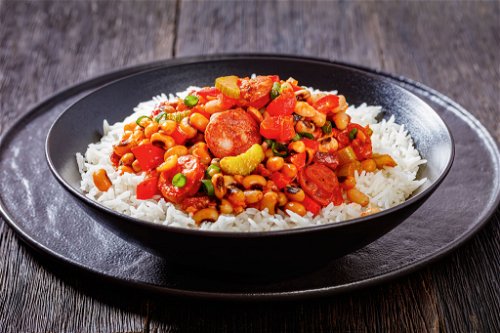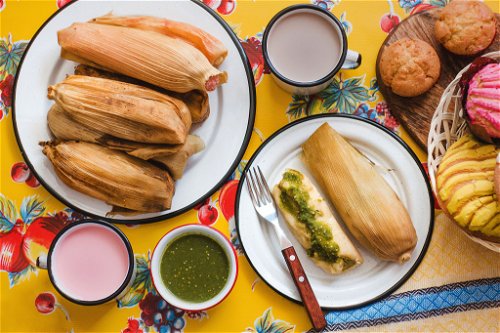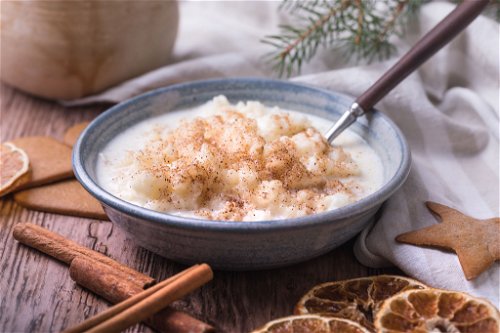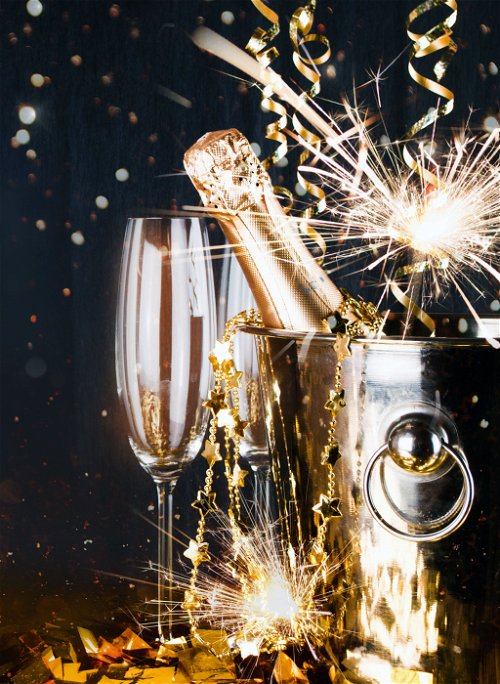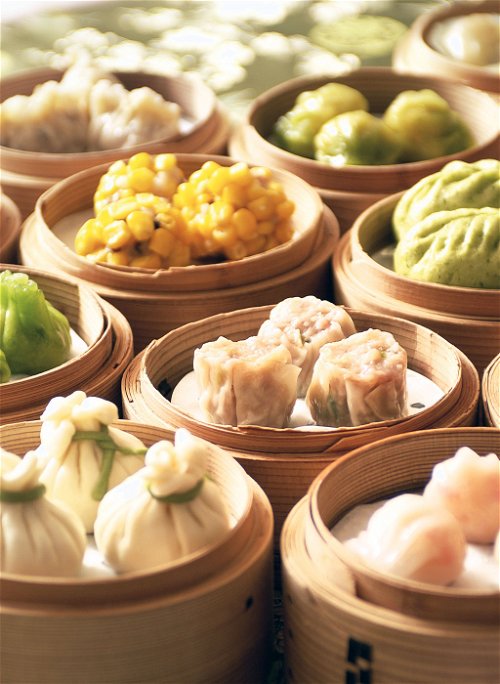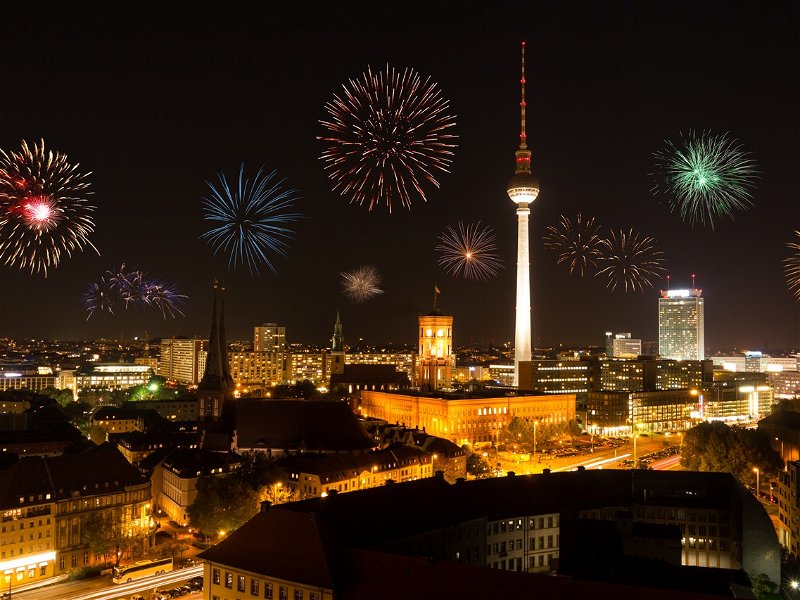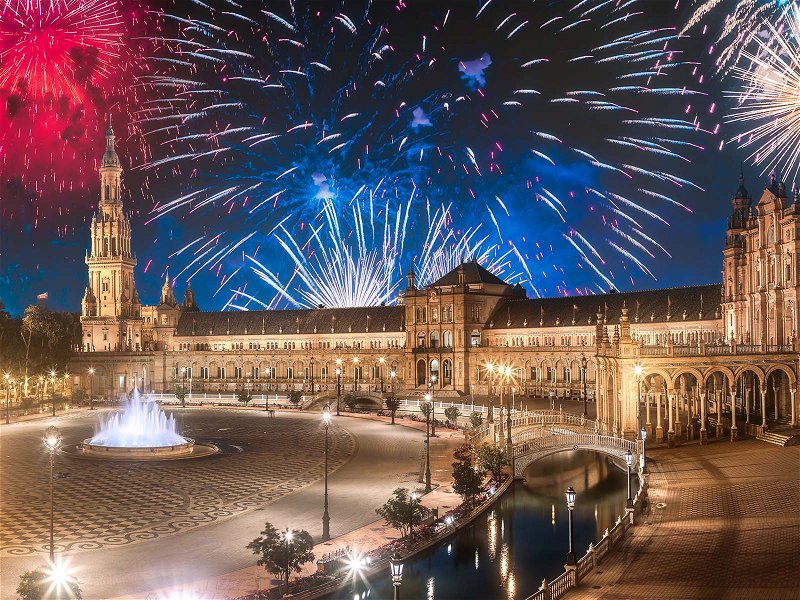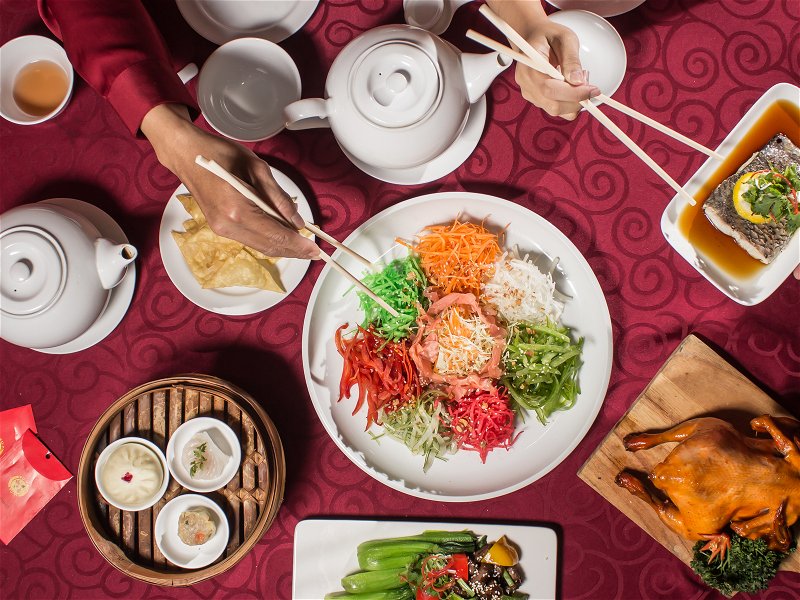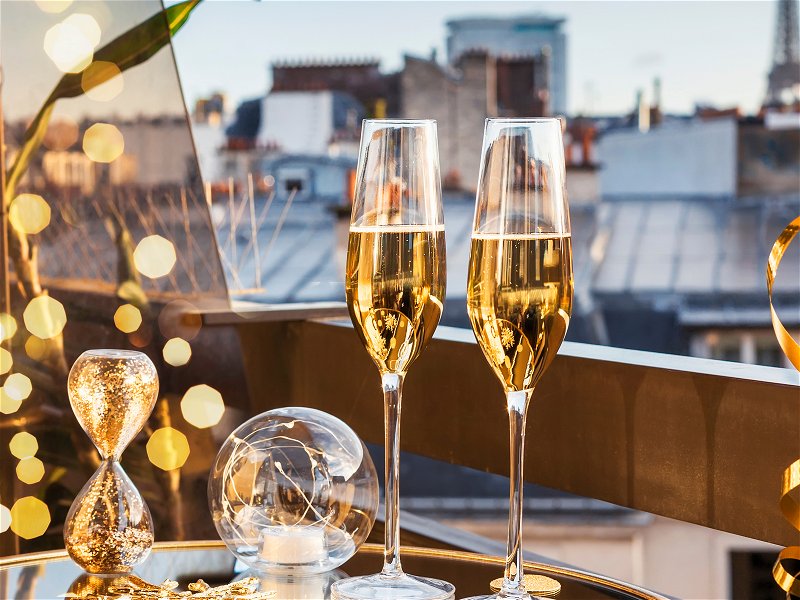Different countries, different customs: how the world celebrates New Year's Eve
Happiness, health, well-being - the transition into the new year is lined with good wishes. The overview of culinary New Year traditions around the world shows what lentils and soba noodles have to do with it.
Germany, Austria, Switzerland & Benelux
Raclette and fondue dominate New Year's Eve, as do deep-fried dough balls and the very rustic potato salad with sausages.
On the last day of the year, it is brought out in many households; the raclette oven, which usually collects dust in a corner, makes its grand entrance. At least in Austria, Germany and Luxembourg, and in Switzerland anyway. As a typical New Year's Eve meal in German-speaking countries, raclette - only authentic raclette cheese from Valais can at best compete with fondue.
Traditions for the last meal of the year have long been established in many families and circles of friends. The reasons for raclette's popularity are obvious: it requires little preparation, nobody has to stand at the stove and the result from the small pans simply tastes delicious. The invention from Switzerland is certainly more prestigious than goulash soup, which is served in many places in Austria after midnight, or potato salad with bockwurst, which is the New Year's Eve meal in many German households. But the most important thing is that you can prepare raclette with all your guests at the table and sit together for a long time, which makes for a convivial evening.
The second Swiss export hit for New Year's Eve also easily meets these requirements. Fondue remains a classic and is popular in at least three variations. While in Germany this is still mainly understood to mean the classic cheese fondue, the lighter fondue chinoise , for which a spicy broth is added, is also becoming increasingly popular. The classic fondue bourguignonne with oil is also a popular variation. Fondue Chinoise is less greasy and also less heavy. In fondue chinoise, the meat is also sliced wafer-thin, while in fondue bourguignonne, meat cubes are used.
A look at the culinary traditions of other countries for New Year's Eve confirms that small, somewhat calorie-rich dishes are quite popular. In the Netherlands, "Oliebollen" are served for the last hours of the year, which translates as oil balls and is nothing more than a crispy baked lard pastry.
Another constant in the culinary New Year's Eve universe are wishes for the coming year, which are expressed through food. For example, lentils are on the menu in many places in Italy, for example in the form of "cotechino con lenticchie". The legumes symbolise wealth, and the more lentils you eat, the richer you will be the following year - or so the legend goes. The fact that the combination with the nutritious raw pork sausage, the "cotechino", tastes good and promotes a certain resistance to drinking can probably be seen as a welcome side effect.
Pure indulgence is celebrated by our western neighbours in France, where, as the cliché goes, Champagne is enjoyed with foie gras slices. After all, you have a reputation to defend! Otherwise, culinary preferences for New Year's Eve differ considerably from north to south; some of the 13 French regions have their own customs.
Southern Europe
King cake and grapes, lentils and champagne: Portugal, Spain, Italy and France celebrate in style.
The Spanish New Year's Eve custom of putting a white grape in your mouth at the stroke of midnight has already found imitators in this country too. The legend behind it is less well known: According to it, it was resourceful winegrowers from Alicante who popularized the custom. They had so many grapes from a rich harvest that they sensed a business opportunity. Today, when the TV channels show the clock on the Puerta del Sol in Madrid at midnight, at the stroke of which the grapes are eaten, the anecdote of the grape harvest has long since faded into the background and what counts is the wish for a successful and healthy New Year.
The Portuguese don't eat grapes on New Year's Eve, but a dozen raisins. Many families also serve "Bolo do Rei", a huge cake decorated with dried and caramelised fruit. Baked into it are a bean and a figurine - whoever finds the figurine will have a lucky streak the following year, but whoever has the bean on their fork will have to buy the cake the following year.
Happiness, health and money are the most common wishes associated with New Year's Eve.
USA & Mexico
In the promise of wealth, people in America eat food that draws a colourful parallel to dollar bills and gold bars.
In the USA, the colour green stands for dollar bills ("greenback"), which is why various types of cabbage are popular in New Year's Eve meals. The idea of serving yellow cornbread baked from corn flour follows the same logic, but is based on the fascination of gold - and is practiced in the southern states. The rice and pea dish "Hoppin' John" is also popular there, for which there is a special custom: Anyone who leaves three peas on their plate is predicted to have good luck, skill and a romantic relationship in the following year.
The United States, with its multitude of population groups and immigrants, has adopted an unmanageable number of New Year's Eve customs from the immigrants' countries of origin. In Mexican-influenced states, "buñuelos", fried pastries accompanied by sweet fruit sauces, are served on the last day of the year. Mexico provides plenty of inspiration for a varied New Year's Eve celebration.
Here, too, people eat a dozen grapes at the stroke of midnight, and lentil dishes are also popular. Uncooked lentils or rice are also placed in a corner of the house for good luck in the New Year. "Tamales", filled pockets of corn dough wrapped in plant leaves and steamed, originated in pre-Columbian times and are also very popular today on the last evening of the year.
Northern and Eastern Europe
In the Scandinavian countries, people like to eat fish, but there is also a sweet side. Estonians don't stop at one meal.
Well-being is also important to the Swedes, who eat a traditional rice pudding with the tongue-twisting name "Risgrynsgröt", which is similar to rice pudding. Whoever finds the almond hidden inside will be lucky in the new year or can look forward to a wedding. Similar to neighbouring Norway and Denmark, Swedes also like to eat fish on the last day of the year, and oysters and lobster are also popular at upscale New Year's Eve gatherings - with the right clothing, by the way: Swedes like to dress stylishly for the occasion, and suits and evening dresses are often seen. If you spend New Year's Eve in Denmark, don't be surprised if your hosts jump off a chair at midnight - this curious custom is still popular today. The delicious "Kransekage" is served at this time of year - a rich wreath cake that is basically just sugar, marzipan and eggs. Rings of different sizes are baked from this mixture and stacked on top of each other for the cake, sometimes sweetened with chocolate glaze. Add a glass of sparkling wine and the party can continue.
In Finland, people first treat themselves to a sauna on December 31st before ringing in the evening with rustic dishes such as potato salad and sausages. Estonians, on the other hand, fortify themselves symbolically with a blessed meal of seven, nine or even twelve courses - including marzipan for dessert. A little something is left on each plate for the spirits of the ancestors who might float by on New Year's Day.
China & Japan
In China, people celebrate with "dumplings" and spring rolls, while the Japanese slurp up symbolic noodles.
You need to be in good shape to celebrate the turn of the year in China - because the period known as the Spring Festival or Lunar New Year lasts a whole 16 days. It also does not begin on December 31, but always takes place between January 21 and February 21, calculated according to the traditional Chinese calendar. Then family and friends come home, no matter where else they are in the vast realm. It is not uncommon for several generations to celebrate the Chinese New Year together. The menu then includes the so-called "lucky dishes", which are associated with positive expectations for the following year. These include fish in particular, which is a symbol of luck and good fortune in China. Dumplings, dumplings with different fillings, are particularly popular as they symbolise filled wallets. Spring rolls, which promise good luck, are also very popular - the red dragons that are often seen at Chinese New Year also symbolize this.
In neighbouring Japan, people eat a dish during the transition to the new year - again on December 31 - that is supposed to represent this transition. While reflecting on the past year and looking to the future, the Japanese sip buckwheat noodles in toshikoshi soba soup. It promises a peaceful life, strength and fortune and is based on bonito broth, refined with spring onions and, if desired, with other ingredients such as fried tofu, shrimps and eggs - this dish is definitely good for your health.

